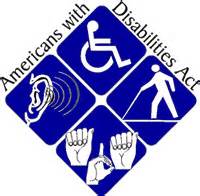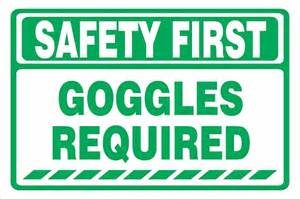The case of Deborah HANSLER v. LEHIGH VALLEY HOSPITAL NETWORK shows how employers can get in trouble with FMLA regulations-even where an employee provides and insufficient medical notice.
Deborah Hansler was hired by Lehigh Valley Health Network (“Lehigh Valley”) in 2011 to work as a technical partner. In early March 2013, Hansler experienced shortness of breath, nausea, and vomiting. The cause of these symptoms was unknown. On March 13, Hansler’s physician completed a medical certification form “requesting intermittent leave at a frequency of 2 times weekly starting on March 1, 2013 and lasting for a probable duration of one month- or until about April 1, 2013.” Hansler submitted the certification to Lehigh Valley as part of a formal request for leave under the Medical Leave Act. Because of her condition, Hansler could not work on March 13, 14, 23, 24, and 25.
Without seeking further information about the medical certification from either Hansler or her physician, Lehigh Valley terminated Hansler at the end of her shift on March 28. The basis for Hansler’s termination was absenteeism, including the five days she took off in March. Hansler reminded Lehigh Valley she had requested time off under the Medical Leave Act, but Lehigh Valley informed her, for the first time, her request had been denied. Following the last of her absences, Hansler learned of a letter dated March 26 explaining her request for “leave of absence (FMLA) for the period of 3/1/13–3/11/13” was denied because her “condition presently does not qualify as a serious health condition under the criteria set forth by the [Medical Leave Act].” In early April 2013, after her dismissal, Hansler received a diagnosis of diabetes and high blood pressure. She alleges these previously undiagnosed and untreated conditions are what caused her March absences.
Hansler sued Lehigh Valley under the Medical Leave Act for interfering with her substantive rights to medical leave and for terminating her in retaliation for seeking leave. In her complaint, Hansler alleges she has chronic serious health conditions and argues that Lehigh Valley improperly denied her request for leave without providing her an opportunity to cure her medical certification. The District Court granted Lehigh Valley’s motion to dismiss for failure to state a claim. It concluded Hansler’s request for leave was defective because her medical certification indicated her condition would last only one month, but the Medical Leave Act requires that a chronic serious health condition persist for an “extended period of time.” The District Court held that because the certification showed Hansler was not entitled to leave, Lehigh Valley was not required to afford Hansler a cure period and could terminate Hansler for her subsequent absences. That Hansler was later diagnosed with diabetes and high blood pressure was of no consequence. According to the underlying Court, “[a]lthough the timing of events for plaintiff was, without question unfortunate, the fact remains that her diagnosis with diabetes and high blood pressure did not occur until after her leave request was denied and she was fired by defendant.”
After summarizing the above facts, the appellate Court began then summarized the law around FMLA notices. It reminded us that a “serious health condition” involves inpatient care in a hospital or “continuing treatment by a health care provider.”
Most important is the Department of Labor’s regulations governing how employers respond to perceived deficiencies in medical certifications. An employer “shall advise an employee whenever the employer finds a certification incomplete or insufficient, and shall state in writing what additional information is necessary to make the certification complete and sufficient.” 29 C.F.R. § 825.305(c). …If the employer determines a certification is either incomplete or insufficient, it may deny the requested leave on the basis of an inadequate certification. But it may only do so if it has “provide[d] the employee with seven calendar days, unless not practicable under the particular circumstances despite the employee’s diligent good faith efforts, to cure any such deficiency.”
On top of that the Court stated the fact Hansler was diagnosed with her illnesses after she was fired does not affect determining whether her medical certification was insufficient.
“Not only is our conclusion dictated by precedent and the statutory and regulatory text, but we believe the cure period makes abundant sense in this context. Faced with nascent symptoms from a yet-to-be diagnosed condition, an employee’s physician may need some additional time to provide the required elements of a sufficient certification, including more specific information regarding relevant medical facts and the probable duration of the condition, the planned medical treatment, and the intermittent leave. 29 U.S.C. § 2613(b). As this case illustrates, for an employee with an emerging condition, the difference between a medical certification that supports leave and one that is deficient might be a matter of days.”
The dissent:
The dissent understood the “trap” position of the employer. Here’s is an excerpt from it.
“The majority fashions a new rule to fit a sad case. In early April of 2013, Deborah Hansler was diagnosed with diabetes and high blood pressure. Had these conditions been diagnosed just days earlier when Hansler applied for FMLA leave, she would have been entitled to medical leave under the Family and Medical Leave Act —ensuring her time to treat her illness and a position upon her return. Instead, Hansler was denied leave and terminated from her job at Lehigh Valley. While I too sympathize with Hansler’s situation, I cannot subscribe to the majority’s strained reinterpretation of the FMLA.
“When an employer receives a request for FMLA leave, the decision on whether to grant that leave depends on the factual situation presented to the employer at the time that the leave is requested. The “crucial moment for determining if a particular condition qualifies” for FMLA leave “is the time that leave is requested or taken.” Here, Hansler requested “intermittent leave at a frequency of 2 times per week” for one month based on her suffering from shortness of breath, nausea, and vomiting during the previous two weeks. Hansler’s medical certification accurately reflected her condition at the time of her request. This condition did not, however, qualify her for FMLA leave. This is not a case of a deficient certification that omitted necessary information. It is simply a case of a certification that describes a condition that is not one for which FMLA leave can be awarded.
“The reader may respond, “Well, let’s not penalize the poor lady for applying too early for leave—for applying before her physician had diagnosed diabetes. Let’s let her clear up any short fall in the information she gave her employer by permitting her to correct her deficiencies pursuant to 29 C.F.R. § 825.305(c).” The problem with this solution is that the employer in good faith, with the completed form and the information on it, has denied FMLA leave because the employee was not qualified for it. There was no indication on the certification of the health care provider that one or more of the applicable entries had not been completed and there was no information that was vague, ambiguous, or non-responsive. The certificate was not rejected by the employer as incomplete or insufficient. FMLA leave was denied because the completed certificate did not present grounds to grant FMLA leave. In this situation, there is no statutory right to cure by presenting further information within seven days. The employer here should not be penalized for denying leave when the complete and unambiguous request for leave did not present grounds for leave.
“….Ultimately, the issue is who bears the burden when an employee has an undiagnosed condition. The majority tasks employers with this novel burden, deeming it irrelevant “whether Lehigh Valley could have known Hansler was suffering from a chronic condition at the time she requested leave.” This construction is not tethered to the statute’s text, which places the burden on employees to demonstrate that they qualify for leave and permits employers to require that a leave request be supported by a medical certification. The majority’s conclusion that employers may not then reasonably rely on that information makes little sense. I would hold that where, as here, an employer has no basis for concluding that an employee has a current, serious health condition under the FMLA, it may deny the leave request. Such a denial is not interference.
Going forward under the Majority’s rule, you will now be able to maintain an interference claim against your employer regardless of your condition when you request leave if you claim that your diagnosis changed or was not finalized until after you submitted the request. This is true for even the most frivolous leave requests. Indeed, following the Majority, as long as the “certification does not contain a statement from [your] physician saying that [you] would not miss any work,” the employer who denies a leave request is at risk of an interference claim. For lawyers seeking attorneys’ fees under the FMLA, this message will sound loud and clear.
Response to the dissent:
“Our decision that the certification Hansler’s doctor submitted is “insufficient” under 29 C.F.R. § 825.305(c) does not mean, as the dissent contends, that “you will now be able to maintain an interference claim against your employer regardless of your condition when you request leave if you claim that your diagnosis changed or was not finalized until after you submitted the request.” Nor does it mean that the “employer who denies a leave request is at risk of an interference claim.” It does mean that when a certification submitted by an employee is “vague, ambiguous, or nonresponsive,” the employer must, under 29 C.F.R. § 825.305(c), provide the employee an opportunity to cure the deficiency within seven days.”
The practice pointer is this: no matter the quality of the FMLA Notice Requesting Leave- if the intended response denies the leave tell the employee why and give them a reasonable period to address any insufficiency. It is also interesting no mention of the ADA accommodation was ever brought up, even though she arguably had a covered disability as well.
For additional information see http://www.dol.gov/whd/regs/compliance/whdfs28d.pdf
 Dental health affects your workplace productivity in several ways. Understand the links as you prioritize your health and your job performance.
Dental health affects your workplace productivity in several ways. Understand the links as you prioritize your health and your job performance.
 This week, a federal district court ruled that the U.S. Equal Employment Opportunity Commission (EEOC) made sufficient factual allegations of intentional discrimination against a local farming company to survive a motion to dismiss.
This week, a federal district court ruled that the U.S. Equal Employment Opportunity Commission (EEOC) made sufficient factual allegations of intentional discrimination against a local farming company to survive a motion to dismiss.

 o matter how dedicated you may be to workplace safety, you will never totally eliminate the possibility of danger. That’s why you have insurance, after all. If you could guarantee a 100% safe and riskless work environment, you wouldn’t need to take out a policy. Unfortunately, life just doesn’t work that way.
o matter how dedicated you may be to workplace safety, you will never totally eliminate the possibility of danger. That’s why you have insurance, after all. If you could guarantee a 100% safe and riskless work environment, you wouldn’t need to take out a policy. Unfortunately, life just doesn’t work that way.







